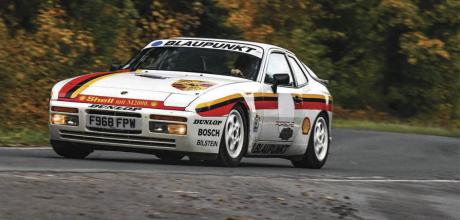Ex-factory, street-legal 1986 Porsche 944 Turbo Cup
Aimed at amateur racers wishing to pit their talents against a few hardened pros, the 944 Turbo Cup series spawned motorsport machines almost identical to their roadgoing siblings. Suddenly, anyone could play race driver...
Words Johnny Tipler
Photography Chris Wallbank
STREET-LEGAL EX-FACTORY RACER
Anex-factory, street-legal 944 Turbo Cup
944 TURBO CUP HITS THE ROAD
FRESH APPRAISAL OF THE TRANSAXLE SUPERHERO
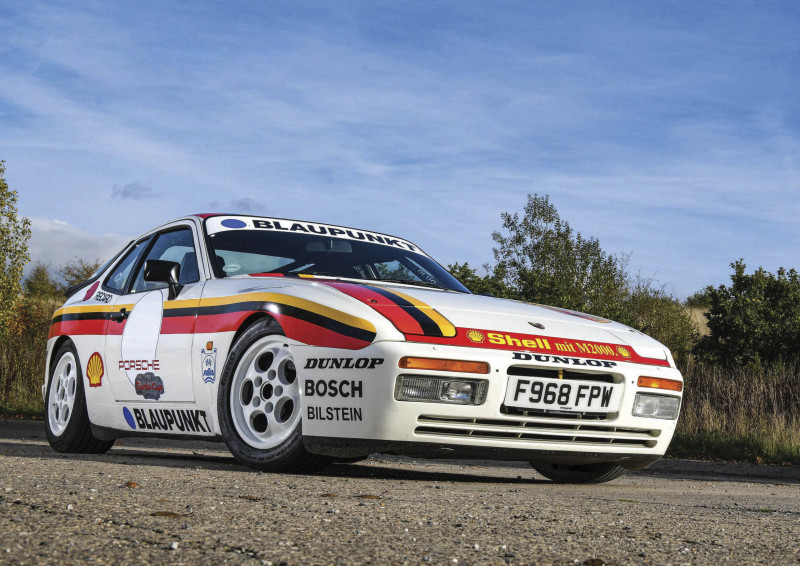
Want to sell more of a particular model? Organise a singlemake, one-model race series! That’ll get ‘em in the showrooms. On the racetracks, too. In order to boost the profile of the 944, Porsche did exactly this in 1986, instigating the 944 Turbo Cup series, which kicked-off in Germany. The championship piggybacked off the ADAC Würth Supercup Group C weekends at the Nürburgring, the Avus in Berlin, the Hockenheimring, the Norisring at Nuremburg, plus a one-off race at Mainz Finthen airport.
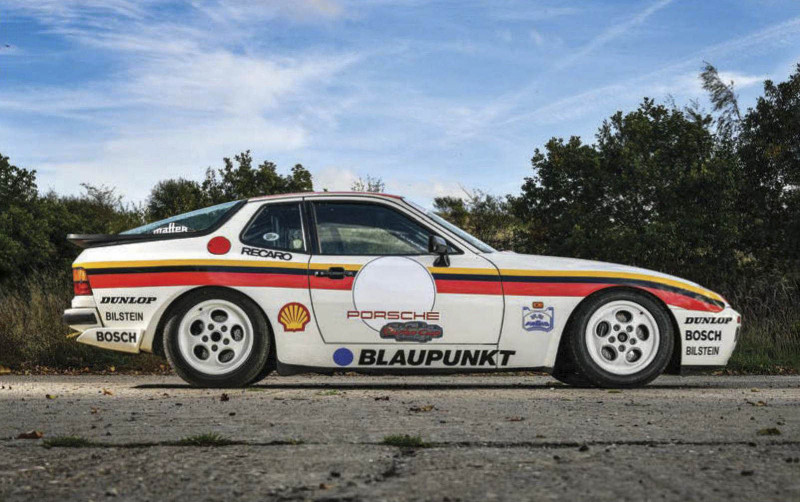
Fair enough electing to run a single-model race series, but to what extent do you need to modify your selected showroom model to turn it into a race car? Shoehorn in the largest capacity motor at your disposal? Er, no. Install high-lift cams and a modded crank? Not really. In fact, the 944 Turbo Cup was not that different from the standard 944 Turbo. Sure, you fit a roll cage and firewall, but then simply delete and omit superfluous kit from the stock model. Some of it, anyway. You are, after all, proposing this as a racer for the road.
The modifications to the standard car were relatively straightforward, aimed at decluttering the 944 Turbo and rendering it race-worthy. A little weight was added by the aluminium Matter roll cage, but was saved with the deletion of underseal and the omission of unnecessary electrical apparatus, such as power windows.
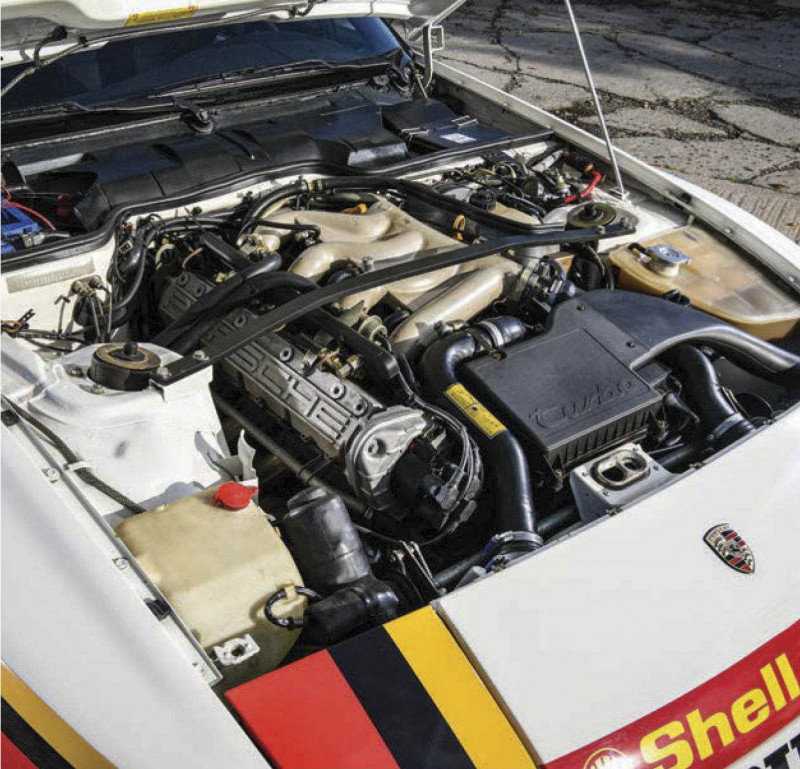
Lightweight door mirrors and a racing bucket seat for the driver were added, and that took care of the cabin. Kind of Club Sport light. Under the bonnet, a magnesium intake manifold was fitted, as was a quick-ratio steering rack. Power steering was dismissed, while a limited-slip differential beefed-up the transmission.
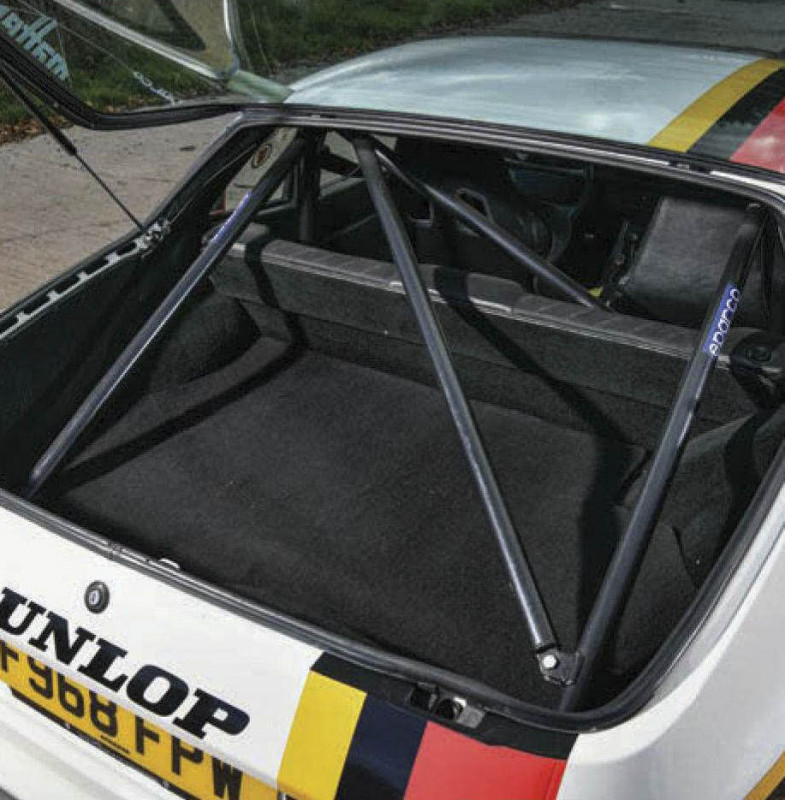
The first 944 Turbo Cup race was held on April 27th 1986 at the Nürburgring Grand Prix circuit, which had been built two years earlier to augment (rather than replace) the long Nordschleife track. At the beginning of June 1986, five weeks after the series launched at the Green Hell, the opening round of the Canadian Rothmans Porsche 944 Challenge took place. Championships in South Africa, Canada, France and the USA followed.
Significantly, 944 Turbo Cup was the forerunner of the multi-national Carrera Cup and Supercup series and was Porsche’s calculated contribution to recreational motorsport. Anyone could have a crack at it and, in the inaugural seven-race series, hobby drivers went head-to-head with professionals. The forty contestants shared a DM45,000 ($23,000) purse at each round the higher you finished, the more you earned.
The bandwagon was rolling. In fact, for Porsche it had been rolling for a long time. The 944 Turbo Cup was born into an era of heady international motorsport, where Porsche could do no wrong. The Group C endurance racing epoch was reaching its zenith, with Porsche’s allconquering 956 B and 962 C rampant, handsomely winning the World Sportscar Championship six years running from 1981 through 1986. The 911 SC RS was a leading light in the European Rally Championship, and the 959-derived 4x4 won the Paris-Dakar Rally. In Formula One, TAG-Porsche turbocharged V6s were powering McLaren to successive constructor and drivers world titles. The flagship 217bhp Porsche 944 Turbo (factory code 951) arrived on the scene in 1985 and was promptly chosen as the basis for the manufacturer’s new single-make series.
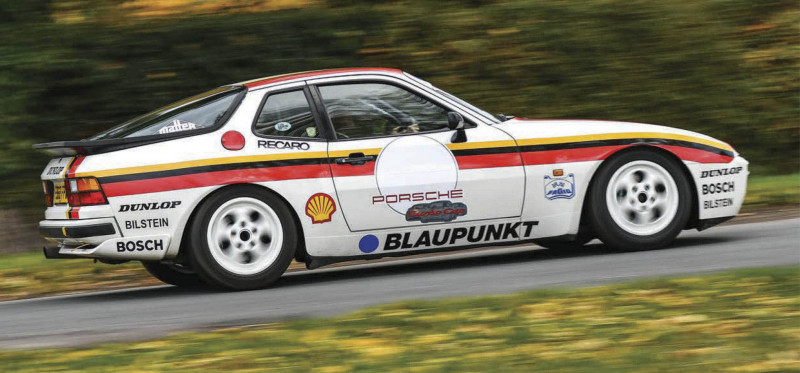
CAT ON THE LINE
Blitzing Le Mans or dune-bugging the Sahara in extreme machines like the 962 and 959 is great for corporate publicity and status, but to keep Porsche’s motorsport exploits relevant for its regular showroom customers, 944 Turbo Cup racers were little modified from stock. The transition from leaded to unleaded fuel was on the horizon, so Porsche insisted Turbo Cup cars ran with catalytic converters, a technology in its infancy at the time, though it’s worth noting the 944 Turbo was the first car to produce an identical power output with or without a catalyst in place. As well as ensuring participating cars were environmentally acceptable, the objective was to assess the performance of a catalysed exhaust at full race temperatures.
The few changes to the standard car that first year included harder-rubber suspension bushes, thicker anti-roll bars (27mm and 21mm) stiffer spring and damper settings, plus eight-inch-wide front and nine-inch-wide rear Fuchs wrapped in 245/45/16 and 255/40/16 tyres respectively. Bearing in mind there were experienced players in the game, to ensure a level playing field, each car’s ECU, knock sensor and boost pressure wastegate were sealed. Porsche stewards carried out spot checks on three cars chosen randomly after every race.
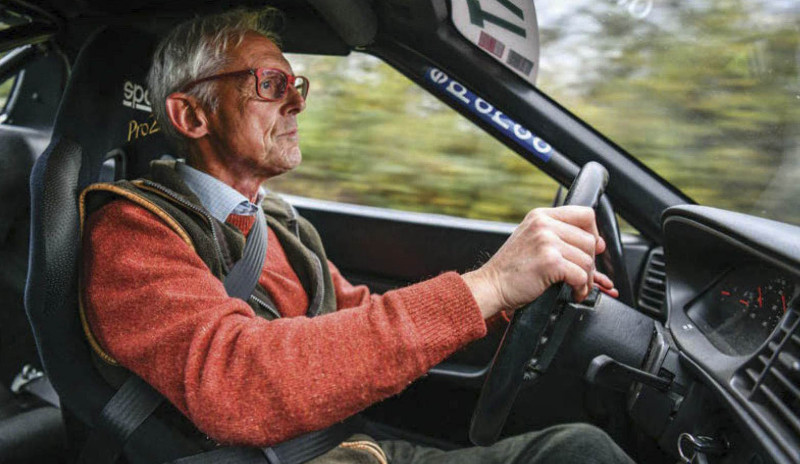
In the shape of the 924 Carrera GTS, There’d been a precedent for the 944 Turbo Cup car. At Weissach, Jürgen Barth and Roland Kussmaul had enjoyed success with the 924 Carrera GT and 944 GTP between 1979 and 1982, but by the mid-1980s, they were busy with other projects, including the 961 Le Mans car and customer 962s. An additional project leader was hired. Step forward Dieter Glemser, former 906 racer, 1972 European Touring Car champ and veteran of the legendary Cologne Capri RS 2600 versus BMW 3.0 CSL E9 battles of the early 1970s (surely, scope for a movie along the lines of Ford vs Ferrari?!). Clearly, Glemser was no stranger to front engined GTs.
ONCE THIS PARTICULAR TURBO CUP WAS NO LONGER CAMPAIGNED, IT WAS SWITCHED TO STREET SPECIFICATION
Top names in the inaugural 944 Turbo Cup Type 951 included Jörg van Ommen, Roland Asch and Harald Gröhs, with tin-top expert, Jo Winkelhock, emerging victorious at the last round. The earnings were shared out in such a way the winner banked DM5,000 ($2,556), second place earned DM4,500 ($2,304), all the way down to twenty-fifth place, awarded DM100 ($51).
With close and dramatic racing between cars of ostensibly identical specification, the series was a hit. For 1987, Porsche elected to run five rounds in Germany and five at other tracks across Europe, namely Zolder, Spa-Francorchamps, the Nürburgring, Brno and Monza. Once established on the racing scene, the 1988 and 1989 Turbo Cup grids served as curtain-raisers for the higher-profile DTM rounds. The tenrace series ran at Zolder, Hockenheim, Nürburgring, Avus, Mainz-Finthen, Norisring, Hungaroring, Salzburgring, Spa-Francorchamps and the Nürburgring again. Blaupunkt became title sponsor in 1987, hence the company’s distinctive logo displayed on our feature car. Prize money rose by DM10,000 and the engines were re-chipped to make 250bhp, along with concessions to stiffer suspension.
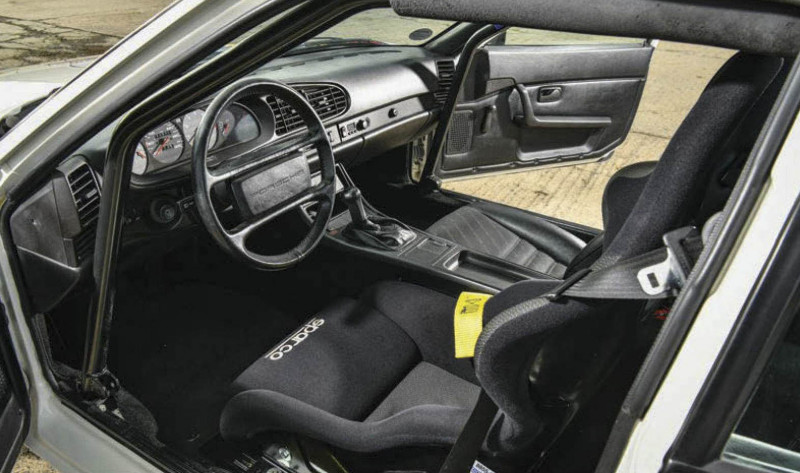
At this point, aided by a larger turbocharger, the 944 Turbo Cup Car became rather more of a racer, with lighter fibreglass panels and the shell seam-welded in places, while the traditional Fuchs wheels were replaced with cast magnesium Teledials. The latest technical tweak was switchable ABS, a move intended to help Porsche assess the benefits of assisted braking under stresses incurred during a race situation. Lessons learned were passed on to showroom customers pretty quickly despite its relatively lavish specification, the 944 Turbo S (introduced in 1988) is a road-going manifestation of the 1987 Turbo Cup car.
COUNTRY MILE
Across the French border, things were a bit different. The 944 Turbo Cup got under way under the auspices of Porsche concessionaire, Sonauto, and competitors were given much freer rein with spec and set up. Straight-through exhausts with no cats were allowed (unleaded petrol wasn't readily available in France), while a larger oil sump made of lightweight magnesium just like the already appointed intake manifold was installed to the 2.5-litre force-fed inline-four. Drilled discs and race pads were slotted into calipers sourced from the 928 S4. A strut brace was fitted between the front shock turrets.
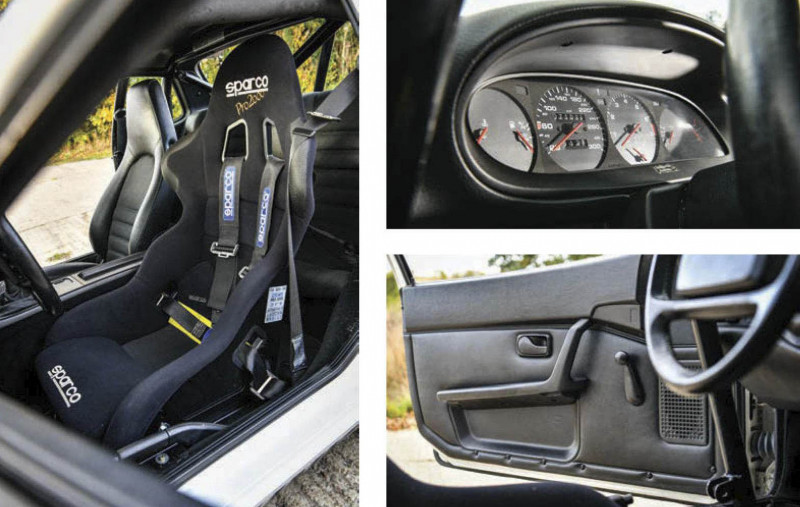
The cabin was naturally stripped of rear seats, with a Matter aluminium roll cage, Recaro race seats and five-point harness fitted on the driver’s side. Unlike the German 944 Turbo Cup cars serving to promote a road-going race car ethic, all leisure and comfort equipment (not limited to air-conditioning and audio equipment) was omitted from the French cars in the interests of ditching more weight. Outside, smaller Cup mirrors were fitted and air intakes replaced the fog lamps. Winner of the inaugural French 944 Turbo Cup championship was René Metge, hot from his victory in the Paris- Dakar rallye-raid, while the German series victor in 1987, 1988 and 1989 was Roland Asch, who went on to star in the 964 Carrera Cup in 1991.
Yes, in 1990, the 944 Turbo Cup series was replaced by Carrera Cup in Germany, while in France, the 944 Turbo Cup challenge continued for one more season. Existing cars were used, but they were endowed with 285bhp power kits installed by French touring car ace, Dany Snobeck. By comparison, German 1990 Carrera Cup 964s produced 261bhp.
Now then, back to business. The Porsche 944 Turbo Cup 951 you see here carries VIN number WP0ZZZ95ZJN104091 and is one of the last three examples built in 1987. According to current owner, Chris Whittle, it appears to have been used by Porsche as a Blaupunkt camera car, one of a handful driven by factory drivers.
Select names from the factory race squad driver roster were entered in the 944 Turbo Cup series, but none of them were allowed to accrue any points. These drivers were in attendance to raise the profile and status of the championship and provided moving targets for the series. amateur drivers to aspire to beat. For example, despite Hans-Joachim .Strietzel. Stuck competing in three 944 Turbo Cup races during the 1987 season, not to mention being credited with a win, he is listed on championship records with nul punkte.
HIT PARADE
Other participating stars with an absence of points that season include Bob Akin, Walter Brun, Jochen Mass, Dieter Quester, Ellen Lohr, Marc Duez and Manuel Reuter. It was a similar deal in France, with a galaxy of famous drivers, such as Jürgen Barth, Jean-Pierre Jarier, Jacques Laffite, Henri Pescarolo and Patrick Tambay, accruing zéro points. We should make it clear, Stuck didn't race our feature car, although he did drive it on the parade laps at the 1988 season.s inaugural 944 Turbo Cup meeting on the Nürburgring Grand Prix circuit. That, for the time being, was this front-engined, water-cooled racer’s singular claim to fame.
Porsche kept the car for a couple of years until, with just 400km on the clock, it was sold to a dealer in Nuremberg, site of the Norisring street circuit that had hosted certain rounds of the championship. The turbocharged transaxle then passed quickly to the Monforte family in Italy, where its arrival was feted by a hundred-strong party of Monforte family friends and relations. It’s curious this car went to Bel Paese, considering there was never a 944 Turbo Cup championship in the country. The date of sale from Porsche is shown as 5/9/1989, with the new vehicle warranty running from 5/11/1989, making Giuseppe Monforte the first private owner. The car was then raced in appropriate Italian race series, first by Giuseppe, later by his two sons.
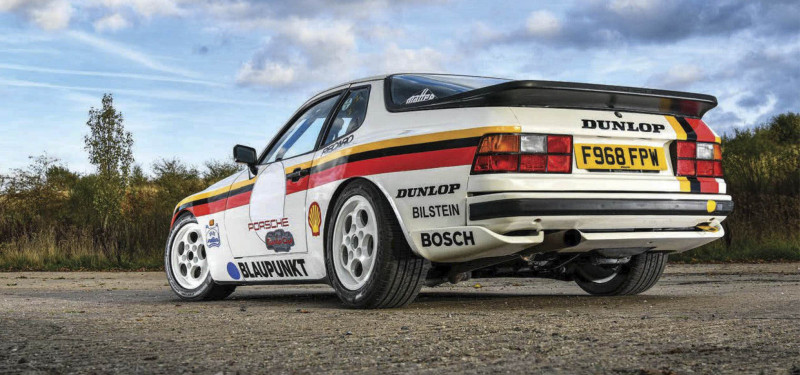
In 2006, after the car had retired from racing, ownership reverted to Giuseppe. Since 944 Turbo Cup cars were so closely aligned with the standard 944 Turbo, once this particular Turbo Cup was no longer campaigned, it was switched to street specification and used as Giuseppe’s road car until 2017. The Porsche was next acquired by RS connoisseur, Thomas Josef Schmitz, head of TJS German Sportscars, based in Telgte, Germany.
He sold the car to Stephen Gannon, founder of premium sports car sales specialist, Car-Iconics, located in Oakham, the county town of Rutland in the East Midlands of England. Chris bought the car from Car-Iconics in 2020. He takes up the story. I’m in possession of the factory build sheets, which state the final-specification M44/52 powerplant is at play. Although there is an identification stamp allocated to the engine, which I’m advised is original, it doesn't have a serial number attached to it. Instead, it reads M44*RC, which I’m guessing stands for Rennsport Cup… He suspects the engine is a hybrid between the M44/51 and the M44/52 units, making use of the larger KKK K26-8 turbocharger. .Regardless, the Monfortes acquired a 964 Cup and a 964 RSR 3.8, the latter going on to win two or three international endurance races during the family’s ownership,. he adds. When Giuseppe stopped racing, he kept this 944 Turbo Cup as his daily driver, racking up 70,000km in the process. It was last serviced in Italy in 2017 by SRL, whose sticker is on the fuse box cover. At the time, SRL was Italy’s official service centre for all Porsche race cars.
WITH CLOSE AND DRAMATIC RACING BETWEEN CARS OF IDENTICAL SPECIFICATION, THE SERIES WAS A HIT
Since his name appeared on its logbook, Chris has made good use of this tip-top transaxle. I’ve driven it at four or five track days in recent months, taking in Snetterton, Oulton Park, Donington and Anglesey. I've only had a few minor issues to contend with, though one or two were of my own making. For instance, I was concerned the ABS wasn't working. When I got it checked over, I was advised it was operating perfectly, but that I was wrong to expect anti-lock brakes on a 944 Turbo to be as good as ABS on my Cayman GT4! He’s made pragmatic choices. I’ve got two sets of magnesium Teledials at my disposal, he reveals, but at the moment, on track, I’m running the car on OEM Design 90 alloys with eight inches of width front and back. Other issues? I’ve had a few problems with things not working the headlamps packed up, the indicators gave up the ghost, the engine developed a misfire and I had to replace the rotor arm. In truth, minor niggles, all straightforward to fix, though anyone thinking about recommissioning a Porsche of this ilk should be aware of how long-winded the process can be.
GIFT FROM ABOVE
He knows of what he speaks. Chris has had an impressive collection of high-end Porsches over the years. In fact, at last count, he reckons he’s owned thirty-three different rare or historically significant Porsche road and race cars. I owned 964 Carrera RS N/GT, the first of 290 examples built. This 911 wasn’t sold by Porsche, but was instead given to Ulrich Richter in November 1991 in order to tempt him back to racing with Porsche as a works driver. The car was owned by Richter until 1993, when he started racing again as a factory driver, achieving substantial success. For a short time, I also owned a 993 Carrera RS, which I used for track work and which was a development prototype with a VIN number ending 0009. I also owned an American Le Mans series 996 GTR.
What is this 944 Turbo Cup one of less than two hundred examples built like on track days? It’s fantastic in the dry, because like all turbocharged cars, you get the front end locked onto the apex and then you just put your foot flat down on the accelerator as the turbocharger spools up. The back end starts to drift out, at which point it’s quite easy to modulate the throttle to keep the car where you want it, he explains. You’ve got the turbocharger spinning. When you put your foot down again, you’re off. This car is a real handful in the wet, though. As I was reminded at Oulton Park, wet strips the heat out of tyres. Whilst it can be fun to let the car drift a little in slow corners, faster bends, such as at the bottom of Cascades, can be challenging to drive when the car is sliding around too much. Over at Car-Iconics, Stephen endorses Chris’s account of the 944’s life story. Giuseppe Monforte held a reception for the car and invented all of his racing friends to witness delivery. It was like a garden party in the car’s honour! This goes to show how adored it was by the Monfortes, who enjoyed and raced it as a family.
DESERVED RECOGNITION
While in Stephen’s possession, the car won first-in-class at the Salon Privé Concours d’Elégance, held annually at Blenheim Palace. We were invited to enter the event’s Porsche concours, celebrating seventy years of the marque in 2018, he continues. We decided we would take the 944 Turbo Cup, chiefly because it was something a bit different from the norm. This is a former factory-owned race car, after all! There’d never been a transaxle Porsche that had scored anything at one of these prestigious events, but here we were with a 944 and scooped what was regarded as the most coveted award of the show. I’ve got the trophy and plaque in my office. There are photographs of the award being presented to us by the Duke of Kent and none other than Derek Bell, who had entered his famous 924 Carrera GT into the competition. A bit of extra kudos and valuable provenance for the car there.
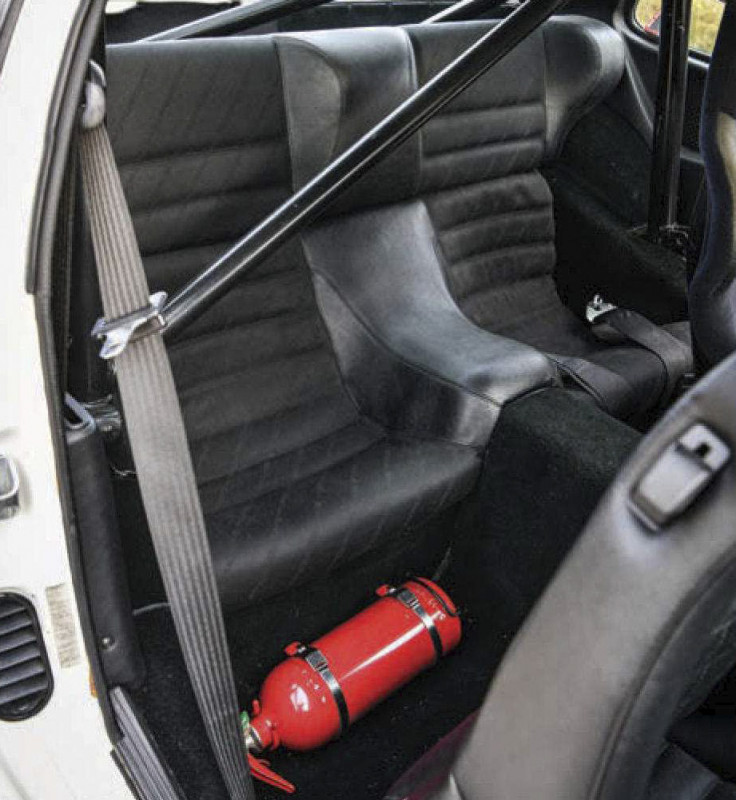
Stephen established Car-Iconics with his son, Daniel, in 2014, effectively turning their passion for classic sports cars into a business. Their specialty is open-book brokering, which, according to Stephen, ensures the customer is totally protected financially. Sale or return is a terribly risky business for the seller. We changed things up to ensure there’s no risk to either the seller or the buyer. In fact, the only risk is to us as broker. We.ve sold hundreds of cars because of this trusted open-book process. What we get out of it is loyalty as an ongoing relationship. Price is irrelevant we’re known for dealing only in top-quality vehicles.
Proving the point, among the current Car-Iconics roster, he highlights ML10, one of three then new Aston Martin race cars built in 1932 (the most attractive of all pre-war competition Astons.) and the only one of the trio remaining totally original. Furthermore, LM10 was the most successful of the three winning its class at Le Mans in 1932 and going on to finish in 1933 and 1934 and the only one of the three to complete three successive Le Mans races. It’s yours for two million.
Prices at Car-Iconics start at ten grand, Stephen laughs. Demonstrating his focus is on quality of vehicle, rather than cost, he suggests Chris as a case study. He recently bought a 911 993 Carrera RSR 3.8 from us. The very same day, he also took home a 28k-mile Honda S2000 for just £15,000. Car-Iconics sells motorcycles, too. All bases covered.
Ballpark value of a 944 Turbo Cup? Chris reveals he paid Stephen £68,000. What it could be worth now, I really don.t know, because the 944 Turbo Cup has been out in the cold for such a long time. This one hasn’t been messed around with, though. The bodywork is in fantastic condition, the car having been in Italy until 2017, and then with Car-Iconics following its arrival in the UK. I’ve only driven it on dry days. It’s garaged and stored sympathetically between outings.
There are lessons here. We know the specification of the 944 Turbo is a sound basis for creating a Turbo Cup race car. Porsche more or less did so with the 944 Turbo S, meaning anyone with a penchant for competition Porsches could quite easily buy a street Turbo and replicate a 944 Turbo Cup looking and driving similarly to this one. As a matter of fact, I’ve already started scanning the classifieds. I suggest you do, too.
Above The car was driven by Hans- Joachim Stuck on the parade lap of the 1988 944 Turbo Cup season opener, held at the Nürburgring.
Above and below Much of the standard 944 Turbo interior was kept in the Cup car, though differences included a race seat and harness for the driver and elimination of door card pockets.
Above and below In addition to this ex-factory 944 Turbo Cup, Chris has owned many rare Porsche road and race cars, including the first 964 Carrera N/GT.
Above Magnesium intake manifold, wheels and oil sump helped reduce weight
Below Flying the flag for rare transaxles, the car won first-in-class at the Salon Privé Concours D’Elégance, where it trumped Derek Bell’s 924 Carrera GT.
Above This particular 944 Turbo Cup was retained by Porsche for two years before it made its way to Italy.


